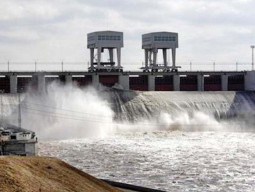
At the risk of sounding like a complete cynic, not much is expected of the defence secretaries-plus-generals’ meeting in New Delhi because Siachen, like other India-Pakistan baskets of disputes, is complicated by doctrines of national security; and these doctrines apparently don’t change. This, of course, is a complete shame given the burden that the high-altitude stand-off places on each country’s meagre resources. The Indian defence secretary, a known hawk, threw in the monkey wrench before the talks got going: Pakistan must do something about home-grown terrorism that spills across the borders. After 27 years, and 11 rounds of talks, the dispute over the ‘occupation’ of the glacier by India will remain unresolved.
In the past, the blunt Indian repartee used to be cross-border violations by so-called Pakistani mujahideen; now it is the Mumbai attack which most Pakistanis think was not carried out by their compatriots. Meanwhile, the two armies have got into the act and wrenched the basket away from civilians on both sides. The Indian Army has convinced the Indian elected leadership that high-altitude experience is good for its soldiers and links it to the ‘Chinese threat’ through the Karakoram Highway.
That the Indian doctrine over Siachen developed gradually as the Indian economy improved is borne out by the fact that the two sides came pretty close on a couple of occasions to signing an agreement over vacating the glacier. Now it is going to be difficult to come to that point again unless the military agrees to normalising relations with India through free trade and free movement of the people.
How did it all start? The roots of it go back to the 1948 India-Pakistan war which ended with an agreed map that delineated the Line of Control (LoC) whose northernmost demarcated point on the map grid was NJ9842. From this point onwards, the map agreed on at Simla simply said ‘thence north to the glaciers’, thus creating a no-man’s land. India said Pakistan moved its troops into the region beyond NJ9842 before it ‘responded’ in 1984: Pakistan said the Indian move began the conflict and that Pakistan was taken by surprise.
In all likelihood, the two teams discussing the Siachen stand-off will walk away from the table mouthing the same separate positions, like in the Sir Creek dispute where the two are hog-tied over whether the water boundary should run mid-channel or on the Indian bank. Some years ago, Indian commentators and analysts began pointing out the absurdity of the conflict where Indian troops took 80 per cent of their casualties from the weather, and to the fact that the human waste and war detritus produced by the two armies polluted the area. No one but the military strategists of India and Pakistan really understand what purpose the war on Siachen serves. It is said that India spent Rs20 million a day in 2002 to keep its troops on the glacier. The cost must be several times that now. Pakistan must be spending a similar amount, apart from the casualties nature inflicts on its soldiers. Strategy is pure imagination and becomes workable only when linked to resources and diplomacy. If this linkage is not achieved, strategy becomes dangerous fantasy. Kargil happened a decade later, a foolish adventure with Siachen in mind.
Both sides seem to be deaf to moderate advice. The real enemy is the changing ecology and how it challenges the two neighbours. The waters that flow from this mountainous region into the subcontinent are mostly used in India, while Pakistan’s lifeline, the Indus River, has its source here. Only 30 per cent of the water needed in the subcontinent is supplied by the monsoons which have become unpredictable in recent years. After the defence secretaries return to their ministries empty-handed, there will be time for ‘strategists’ on both sides to weave even more dangerous fantasies of conflict based on the PNS Mehran attack by the Taliban.
Published in The Express Tribune, May 31st, 2011.











































COMMENTS (6)
Comments are moderated and generally will be posted if they are on-topic and not abusive.
For more information, please see our Comments FAQ